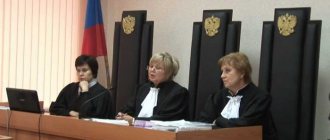1. Poisoning, contamination or other damage to land by harmful products of economic or other activities due to violation of the rules for handling fertilizers, plant growth stimulants, pesticides and other dangerous chemical or biological substances during their storage, use and transportation, resulting in harm to human health or the environment , —
shall be punishable by a fine in the amount of up to two hundred thousand rubles, or in the amount of the wages or other income of the convicted person for a period of up to eighteen months, or by deprivation of the right to hold certain positions or engage in certain activities for a term of up to three years, or by compulsory labor for a term of up to four hundred eighty hours, or correctional labor for up to two years.
2. The same acts committed in a zone of environmental disaster or in a zone of environmental emergency -
shall be punishable by restriction of freedom for a term of up to two years, or forced labor for a term of up to two years, or imprisonment for the same term.
3. Acts provided for in parts one or two of this article, resulting in the death of a person through negligence, -
shall be punished by forced labor for a term of up to five years or imprisonment for the same term.
Commentary to Art. 254 of the Criminal Code of the Russian Federation
1. The main direct object of the crime is relations for the protection and rational use of land, ensuring environmental safety. Additional - relations to protect the health or life (Part 3 of the article) of a person.
Relations regarding the protection and use of land resources are regulated by the Constitution, the Land Code, the Federal Law of July 19, 1997 N 109-FZ “On the safe handling of pesticides and agrochemicals”, the Laws on sanitary and epidemiological welfare, on environmental protection, as well as other regulatory legal acts .
2. The subject of the crime is land, i.e. surface soil layer.
3. The objective side of the crime is expressed very casuistically. It is characterized by damage to land, accomplished alternatively by poisoning, contamination or other damage by harmful products of economic or other activities due to violation of the rules for handling fertilizers, plant growth stimulants, pesticides and other hazardous chemical or biological substances during their storage, use and transportation. ——————————— In our opinion, in the text of Part 1 of Art. 254 of the Criminal Code after the words “or other activities” the word “or” must be inserted.
Poisoning is the saturation of the soil with pesticides or poisonous (toxic) products of economic activity, as a result of which the soil becomes dangerous to the health of people, animals, insects, plants and other organisms and the use of it can cause their death.
Pollution consists of a physical, chemical, biological change in the quality of the soil, which exceeds established standards for harmful effects and poses a threat to human health, the state of flora and fauna.
Other damage to the earth (as well as poisoning or pollution) is associated only with violation of the rules for handling hazardous chemical or biological substances. Therefore, other damage to the land does not include clogging the land with garbage or waste, setting up landfills without permission, landfills, damaging the land with sewage and mechanical means (demolition of the fertile layer, violation of land reclamation rules, digging ditches, dumping dumps, flooding, contributing to the formation of ravines and wind damage). erosion, etc.). These acts can only entail administrative liability.
Other damage may include rendering the land unusable due to the appearance of dangerous chemical compounds in it after the use of fertilizers or pesticides in violation of the rules, the proliferation of dangerous organisms, pests, or the destruction of beneficial organisms.
Fertilizers are organic and mineral substances containing plant nutrients. They are applied to the soil, the solution is sprayed on the plants, and the seeds are treated.
Of the agrochemicals and biological substances, pesticides are most often used - a very large group of chemical and biological means of combating pests and plant diseases, weeds, pests of grain and grain products, wood, wool, leather, cotton products, ectoparasites of domestic animals, and vectors. diseases of humans and animals. Pesticides also include plant growth regulators.
Maximum permissible standards for the use of agrochemicals in agriculture are established in doses that ensure health protection, preservation of the human genetic fund, flora and fauna, and are approved by specially authorized state bodies of the Russian Federation in the field of environmental protection and sanitary and epidemiological surveillance, taking into account international standards.
Other hazardous chemical or biological substances include those that are subject to mandatory state registration on the basis of the Post. Government of the Russian Federation dated July 20, 2013 N 609 “On maintaining the federal register of potentially hazardous chemical and biological substances, amending and invalidating certain acts of the Government of the Russian Federation.”
The Federal Register of Potentially Hazardous Chemical and Biological Substances is a state information resource created for the purpose of implementing the relevant international treaties of the Russian Federation, including the Rotterdam Convention on the Prior Informed Consent Procedure for Certain Hazardous Chemicals and Pesticides in International Trade of September 10, 1998, and requirements legislation of the Russian Federation. The register is maintained by Rospotrebnadzor.
The information contained in the register can be used for the purpose of state registration of potentially dangerous chemical and biological substances and preparations made on their basis that pose a potential danger to humans (except for medicines), individual substances (compounds) of natural or artificial origin, capable under production conditions, application, transportation, processing, as well as in domestic conditions have an adverse effect on human health and the environment, as well as federal state sanitary and epidemiological supervision and federal state environmental supervision. ——————————— See: clause 8 of section II of the decision of the Customs Union Commission dated May 28, 2010 N 299 “On the application of sanitary measures in the Eurasian Economic Union.”
Consequences are an obligatory sign of a crime: they are expressed in harm to human health (see commentary to Article 246) or harm to the environment, i.e. death of vegetation, herbivores and other animals, bringing the soil into a state unsuitable for use in agriculture or for performing environmental functions (see commentary to Article 247).
The crime is completed if pollution, poisoning or other damage to the land causes harm to human health or the environment. A causal relationship must be established between the actions (inactions) named in the law and the consequences. The corpus delicti is material.
4. From the subjective side, the crime is characterized by an intentional or careless form of guilt (see commentary to Part 1 of Article 250).
5. The subject of the crime is a sane individual who has reached the age of 16, who, by the nature of his work, uses fertilizers, plant growth stimulants, poisons, other chemical and biological preparations and substances (employees of research institutes, cultivators of fields, gardens, forests) , as well as warehouse workers and other persons obliged to comply with safety rules when handling these substances.
6. A qualifying attribute (Part 2 of the commented article) is damage to land in an environmental disaster zone or in an environmental emergency zone (see commentary to Article 247). The concept of “the same acts” should be interpreted similarly to those discussed in Part 2 of Art. 250 of the Criminal Code of the Russian Federation. The corpus delicti is formal.
7. A particularly qualifying feature (Part 3 of the commented article) is the infliction of those listed in Parts 1 and 2 of Art. 254 of the Criminal Code for acts of negligence causing death to a person.
8. Criminal damage to land, which is mentioned in Part 1 of the commented article, differs from administratively punishable land offenses (Articles 8.6 - 8.8, 8.12 of the Administrative Code) in terms of consequences and other signs of the objective side. Criminal damage to land is carried out by actions (inaction) that are not provided for in the listed articles of the Code of Administrative Offenses. In addition, the crime provides consequences in the form of harm to human health or the environment or death of a person. There are no consequences provided for in administratively punishable offenses.
Commentary on Article 254 of the Criminal Code of the Russian Federation
1. The main direct object of the crime provided for in the commented article is the relations that develop in the field of ensuring environmental safety, protection and rational use of land. An additional direct object is relations to protect the health or life (Part 3 of the article) of a person.
Relations regarding the protection and use of land resources are regulated by the Constitution, the Land Code, the Federal Law of July 19, 1997 N 109-FZ “On the safe handling of pesticides and agrochemicals” (as amended on July 19, 2011) <1>, the Law on Sanitary and Epidemiological Welfare and the Law on Environmental Protection, as well as other regulatory legal acts.
——————————— <1> NW RF. 1997. N 29. Art. 3510; 2003. N 2. Art. 153, 167; 2004. N 27. Art. 2711; 2006. N 43. Art. 4412; 2008. N 26. Art. 3022; 2009. N 1. Art. 1, 21; N 41 (part 2). Art. 5189; RG. 2011. N 159, 160.
The subject of the crime is land, i.e. surface soil layer as a living environment for people.
From the objective side, the crime is characterized by damage to land, committed alternatively by poisoning, polluting or otherwise damaging land with harmful products of economic or other activities.
Poisoning, pollution, and other damage are caused by harmful products of economic or other activities, which are formed as a result of violation of the rules for handling fertilizers, plant growth stimulants, pesticides and other hazardous substances (during storage, use and transportation of these substances).
Poisoning is the saturation of the soil with pesticides or poisonous (toxic) products of economic activity, as a result of which the soil becomes dangerous to the health of people, animals, insects, plants and other organisms and the use of it can cause their death.
Pollution consists of a physical, chemical, biological change in the quality of the soil, which exceeds established standards for harmful effects and poses a threat to human health, the state of flora and fauna.
Other damage to the earth (as well as poisoning or pollution) is associated only with violation of the rules for handling hazardous chemical or biological substances. Therefore, other damage to the land does not include clogging the land with garbage or waste, constructing landfills without permission, damaging the land with wastewater and mechanical means (demolition of the fertile layer, violation of land reclamation rules, digging ditches, dumping dumps, flooding, contributing to the formation of ravines and wind erosion etc.). These acts may entail administrative liability.
Other damage may include rendering the land unusable due to the appearance of dangerous chemical compounds in it after the use of fertilizers or pesticides in violation of the rules, the proliferation of dangerous organisms, pests, or the destruction of beneficial organisms.
Fertilizers are organic and mineral substances containing plant nutrients. They are applied to the soil, the solution is sprayed on the plants, and the seeds are treated.
Of the agrochemicals and biological substances, pesticides are most often used - a very large group of chemical and biological means of combating pests and plant diseases, weeds, pests of grain and grain products, wood, wool, leather, cotton products, eco-parasites of domestic animals, and vectors. diseases of humans and animals. Pesticides also include plant growth regulators.
Maximum permissible standards for the use of agrochemicals in agriculture are established in doses that ensure health protection, preservation of the human genetic fund, flora and fauna, and are approved by specially authorized state bodies of the Russian Federation in the field of environmental protection and sanitary and epidemiological surveillance, taking into account international standards.
Other hazardous chemical or biological substances include those that are subject to mandatory state registration on the basis of Decree of the Government of the Russian Federation of November 12, 1992 N 869 “On state registration of potentially hazardous chemical and biological substances” (as amended on April 5, 1999) <1>.
——————————— <1> SAPP RF. 1992. N 20. Art. 1669; NW RF. 1999. N 15. Art. 1824.
Consequences are an obligatory sign of a crime: they are expressed in harm to health, i.e. in causing at least one person serious or moderate harm to health (clause 6 of the Resolution of the Plenum of the Armed Forces of the Russian Federation of October 18, 2012 N 21) or harm to the environment, i.e. death of vegetation, herbivores and other animals, bringing the soil into a state unsuitable for use in agriculture or for performing environmental functions (see commentary to Article 247).
A causal relationship must be established between the actions (inactions) named in the law and the consequences.
The corpus delicti is material. The crime is completed if pollution, poisoning or other damage to the land causes harm to human health or the environment.
4. The subject of the crime is a sane person who has reached the age of 16, who, by the nature of his work, uses fertilizers, plant growth stimulants, poisons, other chemical and biological preparations and substances (workers of research institutes, cultivators of fields, gardens, forests), as well as warehouse workers and other persons obliged to comply with safety rules when handling these substances.
5. From the subjective side, the crime is characterized by an intentional or careless form of guilt (see commentary to Part 1 of Article 250).
6. A qualifying feature (Part 2 of the commented article) is damage to land in an environmental disaster zone or in an environmental emergency zone (see commentary to Article 247). The concept of “the same acts” should be interpreted similarly to those discussed in Part 2 of Art. 250 CC. The corpus delicti is formal.
7. A particularly qualifying feature (Part 3 of the commented article) is the negligent infliction of death on a person by the acts listed in Parts 1 and 2 of the commented article.
8. Criminal damage to land, which is mentioned in Part 1 of the commented article, differs from administratively punishable land offenses (Articles 8.6 - 8.8, 8.12 of the Administrative Code) in terms of consequences and other signs of the objective side. The main elements of the crime include consequences in the form of harm to human health or the environment or death of a person. Administrative punishable offenses do not entail the specified consequences, and differ from the crime provided for in the commented article by the place of commission. In addition, criminal damage to land is carried out by actions (inaction) that are not provided for in the listed articles of the Code of Administrative Offenses.
Judicial practice: sentences and punishment under Art. 254 of the Criminal Code of the Russian Federation
- Resolution of the Plenum of the Supreme Court of the Russian Federation dated... PLENARY OF THE SUPREME COURT OF THE RUSSIAN FEDERATION DECISION dated December 27, 2002 N 29 ON JUDICIAL PRACTICE IN CASES OF THEFT,...
- Resolution of the Plenum of the Supreme Court of the Russian Federation dated... PLENARY OF THE SUPREME COURT OF THE RUSSIAN FEDERATION DECISION of November 15, 2016 N 48 ON THE PRACTICE OF APPLICATION BY COURTS OF LEGISLATION GOVERNING FEATURES...
- Resolution of the Plenum of the Supreme Court of the Russian Federation dated... PLENAUM OF THE SUPREME COURT OF THE RUSSIAN FEDERATION DECISION dated June 25, 2022 N 18 ON JUDICIAL PRACTICE IN CASES OF CRIMES,...
- Decision of the Supreme Court: Determination N 203-APU17-21... THE SUPREME COURT OF THE RUSSIAN FEDERATION Case No. 203-APU17-21 APPEAL DECISION Moscow August 31, 2022 Judicial Collegium for Military Personnel of the Supreme...
- Resolution of the Presidium of the Supreme Court of the Russian Federation dated... PRESIDIUM OF THE SUPREME COURT OF THE RUSSIAN FEDERATION DECISION dated December 5, 2018 N 126-P18 ON RESUMING PROCEEDINGS IN THE CASE DUE TO NEW...
- Resolution of the Plenum of the Supreme Court of the Russian Federation dated... PLENAUM OF THE SUPREME COURT OF THE RUSSIAN FEDERATION DECISION dated December 17, 2022 N 43 ON SOME ISSUES OF JUDICIAL PRACTICE IN CASES...
- Ruling of the ECtHR dated 02/14/2017 EUROPEAN COURT OF HUMAN RIGHTS THIRD SECTION CASE “MASLOVA VS. RUSSIAN FEDERATION” (Complaint No. 15980/12) JUDGMENT…
- Decision of the Supreme Court: Resolution No. 310P13 dated... DECISION OF THE PRESIDIUM OF THE SUPREME COURT OF THE RUSSIAN FEDERATION Case No. 310-P13 Moscow January 23, 2014 Presidium of the Supreme Court of the Russian Federation...
- Decision of the Supreme Court: Determination No. 56-КГ16-46 dated... THE SUPREME COURT OF THE RUSSIAN FEDERATION No. 56-КГ16-46 DETERMINATION Moscow March 6, 2017 Judicial Collegium for Civil Cases of the Supreme Court...
- Decision of the Supreme Court: Determination No. 56-КГ16-46 dated... THE SUPREME COURT OF THE RUSSIAN FEDERATION No. 56-КГ16-46 DETERMINATION Moscow March 6, 2017 Judicial Collegium for Civil Cases of the Supreme Court...
Article 254 of the Criminal Code of the Russian Federation. Damage to the earth.
Commentary on Article 254
1. The social danger of the crime in question lies in the fact that damage is caused to the land - the national heritage of Russia, the main means of production, the place of residence of the peoples inhabiting the country, the basis for the functioning of all sectors of the Russian economy.
The goals of land protection are: a) prevention of degradation, pollution, littering, land disturbance, and other negative (harmful) impacts of economic activity; b) ensuring the improvement and restoration of lands subject to degradation, pollution, littering, disturbance, and other negative (harmful) impacts of economic activities (Article 12 of the Land Code of the Russian Federation).
2. The object of the crime is environmental safety, as well as relations to ensure the protection and rational use of land. The subject of the crime is land as an integral part of the natural environment (lands located in an industrial zone, agricultural land, lands of individual users of land plots: settlements, transport, communications, energy, defense and other purposes; forest and water funds, as well as reserve lands ). To resolve issues of application of the article under consideration, it does not matter whether the land is developed, developed or not developed by man, taken out of circulation; the form of ownership of the land and the nature of its ownership do not affect.
In the sense of Art. 254 earth is understood as a surface soil layer, a mineral-organic formation characterized by fertility and performing environmental, economic, cultural, recreational and other functions.
3. The objective side of the crime is expressed in the poisoning, contamination or other damage of land with harmful products of economic or other activities due to violation of the rules for handling fertilizers, plant growth stimulants, pesticides and other dangerous chemical or biological substances during their storage, use and transportation. The Federal Law “On Environmental Protection” uses a general concept - “pollutant”, i.e. a substance or mixture of substances, the quantity and (or) concentration of which exceeds the standards established for chemical substances, including radioactive substances, other substances and microorganisms and has a negative impact on the environment.
4. Specified in Art. 254 rules are contained in various regulatory legal acts regulating economic, scientific, medical, military and other activities related to the circulation of hazardous substances and products named in the law (for example, the Land Code of the Russian Federation, Federal Law of March 30, 1999 N 52-FZ “On sanitary and epidemiological well-being of the population”, Decree of the Government of the Russian Federation dated November 12, 1992 N 869 “On state registration of potentially hazardous chemical and biological substances”, Decree of the Government of the Russian Federation dated November 15, 2006 N 689 “On state land control”, etc.).
———————————
NW RF. 1999. N 14. Art. 1650.
5. Land poisoning reflects the extreme degree of land pollution and is characterized by the saturation of the soil with pesticides or poisonous (toxic) products of economic activity, bringing it to a state where, as a result of anthropogenic activity, it becomes dangerous to the health of people, animals, insects and other organisms.
Pollution is a physical, chemical or biological change in the composition of the soil that exceeds established maximum standards for harmful effects and poses a threat to human health, the state of flora and fauna.
Other damage to the land is the partial or complete destruction of the fertile layer of soil, resulting in the loss of its fertility, deterioration of its composition, and a decrease in overall natural and economic value as a result of violation of the rules for handling hazardous chemical or biological substances (see letter from Roskomzem dated March 27, 1995 N 3 -15/582 “Methodological recommendations for identifying degraded and contaminated lands”).
6. The norm in question does not provide for liability for damage to land that occurred not as a result of violation of these rules, but as a result of other actions: construction of landfills and landfills, contamination of land with waste and refuse, etc. Unauthorized removal or movement of fertile soil layer in accordance with Art. 8.6 of the Code of Administrative Offenses of the Russian Federation forms an administrative-legal tort.
7. The law lists the consequences of damage to land as causing harm to: a) human health or b) the environment. Their content is, in fact, similar to the same consequences provided for by other norms on environmental crimes. It should only be noted that when determining damage to the natural environment, it is necessary to take into account the provisions of the Procedure for determining the amount of damage from pollution by chemical substances, 1993, and the Scale of civil claims brought against organizations and individuals for compensation of damage caused to the state hunting fund, 1993.
Between violation of the rules of treatment specified in Art. 254 hazardous substances and products and the resulting consequences must be established.
8. The crime has a material composition and is considered completed from the moment at least one of the consequences named in the law occurs.
9. From the subjective side, the crimes provided for in Parts 1 and 2 of Art. 254, can be committed both intentionally and through negligence. There is no reason to limit the subjective side of the crime in question to guilt in the form of indirect intent, as some authors do.
———————————
Criminal law of the Russian Federation. Special part / Ed. B.T. Razgildieva, A.N. Krasikova. Saratov, 1999. P. 440.
10. The subject of the crime is a person who has reached the age of 16, who, by the nature of his professional activity or privately, stores, uses or transports fertilizers, plant growth stimulants, pesticides and other dangerous chemical or biological substances.
11. According to Part 2 of Art. 254 liability arises for damage to land in an area of environmental disaster or environmental emergency (see commentary to Article 247 of the Criminal Code).
12. The commission of acts provided for in Parts 1 and 2 of the article in question, which resulted in the death of a person through negligence, forms a particularly qualified crime (Part 3 of Article 254).




